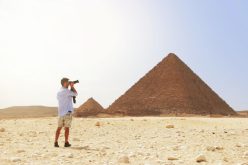Javea on Spain’s Costa Blanca is a very popular tourist resort in the Alicante region and has been attracting tourists from the UK and other parts of Europe for around 30 years. Many of these visitors like the place so much that they decide to live there; making for a fairly large expat community in the area.
The town of Javea consists of three main sections: there is the old town which is known as Javea Pueblo, then there is Javea Puerto, the busy port, and last but not least the main beach area which is called Playa de Arenal. Due to development and expansion the old town and the port are more or less one area now, while the beach is around 3 km along the coastline from the port.
Right next to the town of Javea is a lighthouse on a hill which is known as Cabo de Nao; a very popular spot with visitors, as is the Cabo de San Martin with its spectacular views.
The port area is interesting not only for the array of beautiful boats and yachts, but also for lovely walks in the sea air, day or night, rounded off with a visit to one of the many excellent restaurants. These restaurants specialise in fresh seafood caught that morning, while they also cater for many different tastes. There is a further array of wonderful bars and restaurants on the promenade of Playa de Arenal, where patrons can sit and enjoy the breath-taking sea views along with the excellent cuisine.
The town centre also provides a vast selection of restaurants; offering cuisine from all corners of the globe, as well as typical Spanish dishes and more of that wonderful fresh fish.
For those who like to shop there is also plenty to capture the imagination: famous named boutiques as well as budget stores, large supermarket chains and individual market stalls. There is also a weekly market where the locals come to offer you their individual treats of local produce and souvenirs.
Beyond the town can be seen the slopes of the Montgo; the famous mountain which has shown proof of prehistoric cave dwellers from more than 30,000 years ago. The Migdia cave still has old paintings from these times which are extremely popular with visitors to the area. The slopes of the Montgo have yielded treasures from the past, like Stone Age flints and axes, Moorish ceramics and Roman pottery: many of these treasures can be viewed in the local museum.











